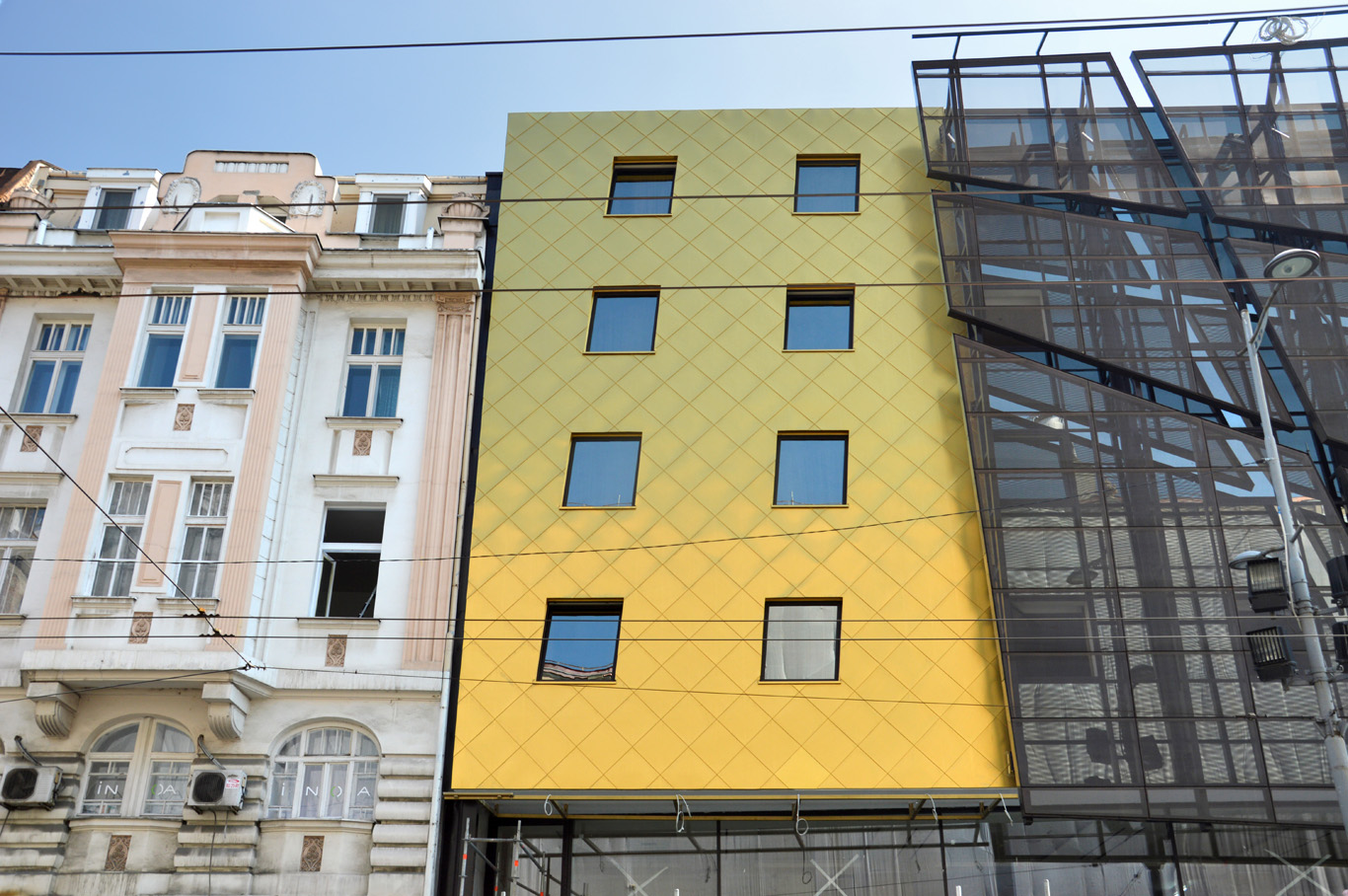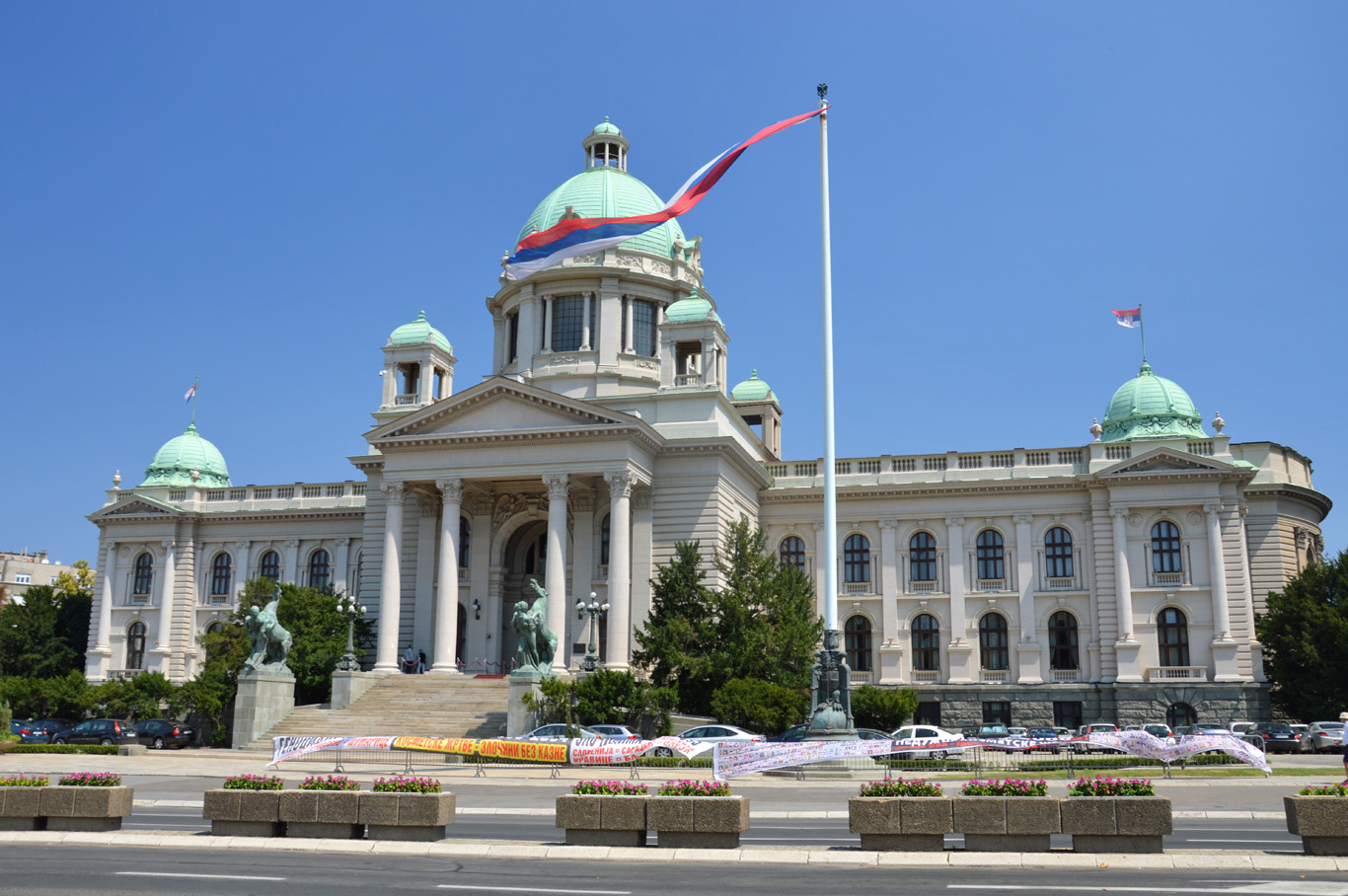As you know from my earlier posts, the Balkans is my favorite region in Europe and maybe in the entire world. It's cultural diversity, interesting, unique architecture, cozy towns, spectacular mountains, unspoiled paradise beaches and superb food speak for themselves. And with all that to offer - very few typical foreign tourists come here. Thanks to this, the area is kept authentic - in contrast to some other "plastic" destinations filled with tonnes of cheap souvenirs made in China to attract the masses. However, the capital cities of the Balkans seem to be not that appealing. This is probably because of the turbulent history and damage the region suffered in recent times. Nevertheless, some cities, like Tirana, Pristina, Skopje or Ljubljana - although definitely less attractive than the rest of the countries they are in - are at least interesting, different, with a nice vibe. Belgrade, in turn, seemed cold, concrete and soulless to me. But that doesn't mean that there's nothing to see there.
What to see in Belgrade in one day
First impressions
I didn't intend on visiting Belgrade - I had a chance to do it on my way from Slovenia all the way down south to Macedonia. Me and my companion took an overnight bus from Ljubljana to Skopje via Belgrade. We arrived in Belgrade early morning, the next bus (to Skopje) departed late evening so we had a whole day to explore the Serbian capital.
Coming from Slovenia - a country which is literally spotless, clean and perfectly maintained (maybe with the exception of Ljubljana, but it still looks like a normal European city) we got a bit of a shock while getting off the bus at Belgrade bus station. The area was filthy, dodgy, messy and chaotic - resembling more of Asia than Europe.
After quite a long and tiring bus journey, we had a hope to find a hostel around in order to take a shower but in all of them we were asked to pay full amount for one night! That was a bit ridiculous for the 15 minutes we needed. We went back to the railway station and were offered a shower for 3 EUR. But "the shower" turned out to be a hose slung over the wall of one of the toilet cabins. The water was freezing and the overall experience was quite extreme. But at least it gave us a relief from the scorching heat of Belgrade's summer.
Around the railway station
Belgrade around the railway and bus stations is truly depressing. Grey, gloomy, crumbling buildings are tightly squeezed one next to another. This is how I imagined a typical Soviet style city. I had thought the same about Kiev, Ukraine, but after seeing it for myself, it surprised me so much with its beautiful, colorful architecture and vibrant city center. And Kiev's railway station is like a palace!
Belgrade, outside the horrible railway station appeared to look better, too. However, there was nothing unique or different that might make it distinctive. And it turned out that we managed to walk over the entire city center and see all the thing to see within a couple of hours. After that, there was nothing else to do but just sit and wait in the parks and cafes waiting for the bus to Skopje.
Belgrade Railway Station
Belgrade at the station
The fortress
The fortress
The Fortress
Military equipment at the fortress - part of the Military Museum Exhibition
Republic Institute for the Protection of Cultural Heritage
Republic Institute for the Protection of Cultural Heritage
View from the fortress
A monument in the park near the fortress
Contrast - old and new
The fortress and the old town
This is how we visited the city and it seems to be the easiest and quickest way: From the station, get the Sava river and keep walking along its banks until you reach the 5th century Kalemegdan Fortress. It's the oldest remaining part of Belgrade - unfortunately mostly in ruins. Around, there's a park and it's a good viewpoint of the other side of the river - however the view is not very attractive, to be honest. Within the complex, you can see a few old churches, ancient city gates as well as remnants of Ottoman influence - the building of the Republic Institute for the Protection of Cultural Heritage.
Exit the fortress in the old town - Tadeusa Kosciuska street. Old town in Belgrade is way nicer and better maintained than the other parts of the city. Although it has large, concrete streets, the architecture is mainly Central European with Eastern/Soviet elements as well as very few Ottoman buildings. You can clearly see the inclination towards Russia in Belgrade - unlike nearby Kosovo, Albania or Macedonia with the US and European flags everywhere.
In the very old town you can visit the Cathedral Church and Princess Ljubica's Residence. The latter stands out as a beautiful mansion built in the 19th century in oriental style with a touch of European neoclassicism. The rest of Belgrade old town - especially the pedestrian Kneza Mihaila street look very European. Here, you can find a lot of bars and restaurants with good prices and delicious food. You can also admire the National Museum here - however, when we were in Belgrade, the building was undergoing renovation.
Modern Belgrade
At the end of Kneza Mihaila street, you'll see a change in architecture - heavy, more typical of the Communist countries style dominates here. They are well maintained though. Note the Hotel Moscow completed in 1908 - it's one of the spectacular examples of the Art Noveau style. Now you are in Terazije street. Keep walking until you get to Belgrade's most beautiful temple - Saint Sava church completed in 2004. It's enormous white dome towers above the city. Yes, although I didn't enjoy Belgrade as a city too much, it does have impressive monuments.
On the way back towards the city center, turn right into Kneza Milosa street - you can admire another beautiful monument here - St. Mark's Church, completed in 1940. It's completely different than Saint Sava Temple (but not less beautiful) - made of golden stone, it retains the typical Serbian Orthodox style.
Nearby, at the Nikola Pasic Square, you'll see the Serbian Parliament Building which served as a headquarter of the former Yugoslavia.
Now you can continue back towards the old town - you've basically visited all the most important monuments of Belgrade.
Something surprising
There was one thing, however, that really surprised me - when I was there, in the summer 2015, the "Transformers Exhibition" was held in Belgrade. As a result, huge, 10 meter (32 ft.) high robots made entirely of recycled materials were set up in the city center. It took almost 2 years for the artist Danilo Baletić from Montenegro to complete his work. And it was really impressive! If that installation was there for good - I would be likely to change my opinion about Belgrade.
French Embassy building
Belgrade old town
Cathedral Church
Ottoman style cafe
Princess Ljubica's Residence
One of the nice streets in the old town
Kneza Mihaila Street
Kneza Mihaila Street
Republic Square
Transformers in Belgrade
Transformers in Belgrade
Hotel Moscow
Cafes and restaurants
Mixed architecture
Final thoughts - Why did I not like Belgrade too much?
One may say that there are much uglier cities than Belgrade and I agree. Belgrade, besides the horrific station areas is quite nice, pretty looking. But, in my opinion, it lacks any distinctive feature. Ljubljana (Slovenia) and Sarajevo (Bosnia and Herzegovina), for example, have their cozy old towns with narrow streets. Tirana (Albania) or Pristina (Kosovo), in turn, are way uglier, with lots of communist era buildings and without spectacular architecture. But Tirana's old concrete high-rise blocks are painted in bright colors and crazy shapes. Yes, it is tacky and totally kitsch, but how different and interesting! Pristina has its own, warm atmosphere and completely weird national library resembling an UFO station. And I had best and cheapest fast food meals in my life there.
Let it not discourage you from visiting Serbia - it's a beautiful country with spectacular National Parks surrounding the Danube river. Also, don't miss the completely unknown rock formations "Davolja Varos" (Devil's Town) resembling the famous fairy chimneys in Cappadocia, Turkey.
Parliament Building
St. Mark's Church
Saint Sava Church
Modern Belgrade
Chapel near Saint Sava Church
Modern Belgrade
Reflection in glass
Government building in Belgrade
Modern Belgrade
If you liked this article, you can also download it via the GPSmyCity app - you will be able to gain access to the guide, which will direct you to all the attractions described above, even if you're offline. Download it here.
Related Posts
Copying without permission is not allowed. If you wish to use any of the site's content (photos or text) or work with us, please contact us.
We welcome questions, advice, support or criticism. However, spam comments will be removed.









































